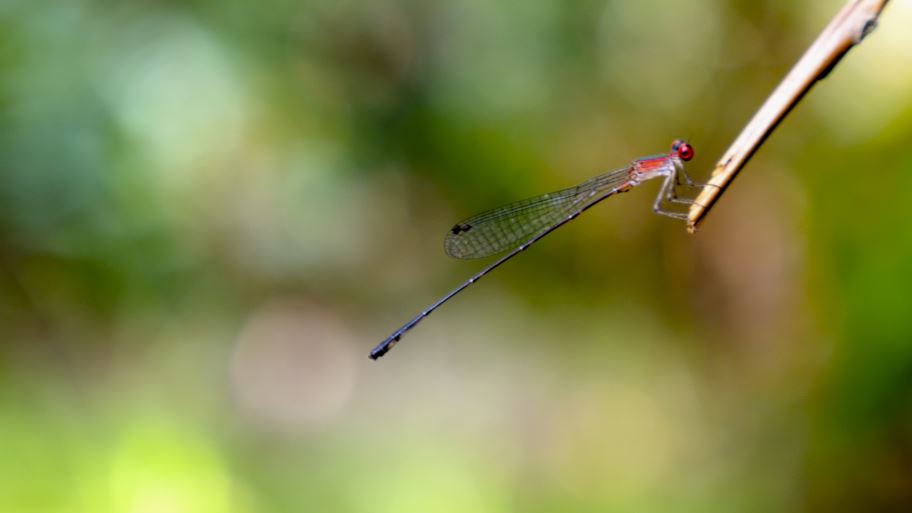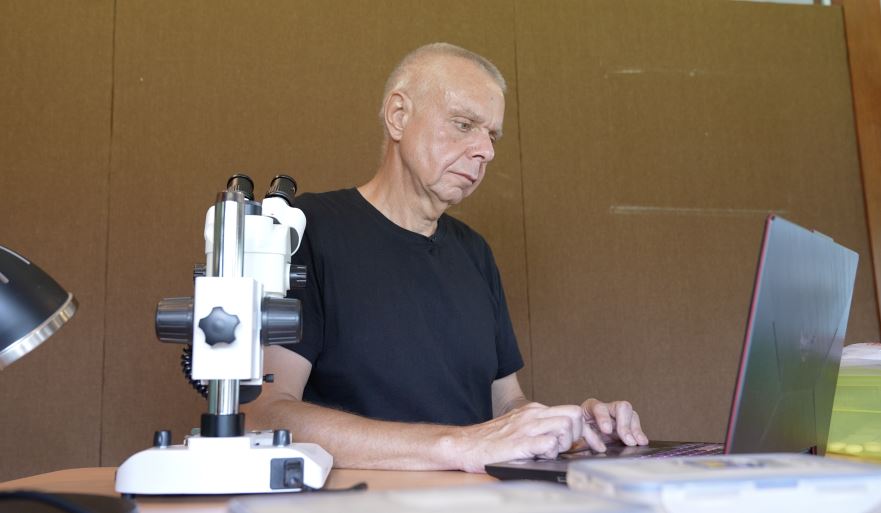October 14, 2024
Dragonflies are beautiful, mind-boggling creatures. They were among the first flying insects to evolve on our planet over 300 million years ago (making them older than the dinosaurs), and have been decorating the skies with their aerobatics ever since.
To really understand dragonflies, you have to explore their world and study their behaviour. At Restorasi Ekosistem Riau (RER), we’re continually developing our knowledge of these animals and the vital role they play in wetland environments. In this article, we’ll take a closer look at dragonflies and reveal some of their secrets.
Taxonomy and appearance
There are around 3,000 species of dragonflies, or ‘odonates’, known to science. They live on every continent in the world besides Antarctica, and they come in all shapes, colours, and sizes too. The biggest dragonfly on record had a wingspan of 28 inches (70 cm), making it the largest insect in history.
Dragonflies are instantly recognizable by their appearance. They have a pair of strong, transparent wings, split into perfect symmetry by an elongated and often brightly coloured body, which is topped with a pair of iridescent compound eyes. These are actually made up of about 28,000 individual eyes (called ommatidia), which give dragonflies binocular vision in a colour spectrum wider than our own (unlike humans, dragonflies can see UV light).
Dragonflies vs damselflies
Dragonflies can sometimes be confused with damselflies, which belong to the other odonatan infraorder (Zygoptera). Damselflies are usually lighter in build, and are not as powerful flyers. Most dragonflies hold their wings outstretched, away from the body, whereas damselflies fold their wings up above the abdomen when resting. When it comes to behaviour and general character, dragons and damsels live up to their names.
To predator from prey: The life cycle of a dragonfly
Like caterpillars and butterflies, dragonflies’ life cycle is a complex process, involving distinct stages separated by growth and metamorphosis. In fact, dragonflies’ change could be considered even more radical than butterflies, since they inhabit two very different worlds during their lifetime (water and air). There are three stages to the life cycle of a dragonfly: Egg, larva, and adult.

A dragonfly’s life begins when an adult female lays her clutch of eggs on leaves and stems close to water. These eggs, laid over several days or even weeks, can be either endophytic (meaning elongated in shape) or exophytic (meaning round, and sometimes in a jelly, like frog spawn). During her lifetime, a female dragonfly may lay over 100 eggs.
When these eggs hatch, the larval stage of a dragonfly’s life cycle begins. Dragonflies spend most of their lives in this form. For most, it lasts for two-three months, while some species – like the golden-ringed dragonfly – live as larvae for more than five years! Sometimes referred to as dragonfly ‘nymphs’ or naiads, these mini beasts are voracious hunters, lurking in the shadows of ponds and rivers and picking off unsuspecting crustaceans, worms, snails, leeches, tadpoles, other insect larvae, and even small fish.
When the nymph is big and strong enough, it floats to the surface and begins to breathe air in preparation for the molt – unlike butterflies, dragonflies transform directly from a larva to an adult, without the need for a pupal transition phase. The larvae will climb up vegetation protruding from the water and cling to a sturdy stem using their legs as anchors. The adult dragonfly then slowly emerges, leaving only a husk of the larval form behind (called an exuvia).
After emerging, they take about a week to fully mature into their adult form, gradually hardening their exoskeleton and acquiring the bright colours that signify each species. This phase in the dragonfly’s life cycle is also its swan song; life expectancy is a matter of weeks, during which time the adults are busy hunting and mating, to ensure the whole life cycle can begin anew.
Ecosystem role in RER
Dragonflies play an important role in their environment, both as predators and as prey. Additionally, because they depend on clean, oxygenated water for their breeding cycle, they are a clear bioindicator of ecosystem health. But despite their importance, relatively little is known about the dragonflies of Sumatra, especially in Riau Province. To bridge these information gaps, in 2020 RER began a research project with Dr Rory Dow, a well-known expert on tropical odonatan species and a member of the IUCN Odonata Specialist Group.

In December 2022, Dr Dow’s team reported a total of 58 species of dragonflies and damselflies in RER, two of which are listed as Endangered (EN), and one as Vulnerable (VU) according to the IUCN Red List. The latter species is Brachygonia puella, which comes from Libellulidae family and can be found in Sarawak on the Malaysian island of Borneo, and in Indonesia’s Belitung island. It was first discovered in Riau back in 2016, when our team documented its appearance in RER.
Another member of the Libellulidae family, and one that is more commonly spotted around RER, is Tholymis tillarga (LC), also known as the coral-tailed cloudwing. This medium-sized dragonfly has reddish eyes, an amber-coloured thorax and a bright crimson abdomen. It breeds in the weedy ponds, swamps and lakes of the RER environment, and is usually most active at dusk and dawn.
Utilising data collected from a total of four in-depth studies in partnership with Dr Dow, RER intends to build a comprehensive Dragonfly Biotic Index (DBI) for the Kampar Peninsula. The DBI will help us detect changes in habitat conditions due to pollution, degradation, or invasion by alien species, and can therefore be used to monitor habitat recovery. Crucially, it can also help us prioritise sites in need of special attention.
For hundreds of millions of years, the life cycle of dragonflies has continued to revolve in and around the wetlands of our world. With global wildlife facing an uncertain future, RER dragonfly studies are deepening our understanding of biodiversity and the unique roles each species plays in its environment. Ultimately, by studying and appreciating the natural world, we will be better able to protect it.